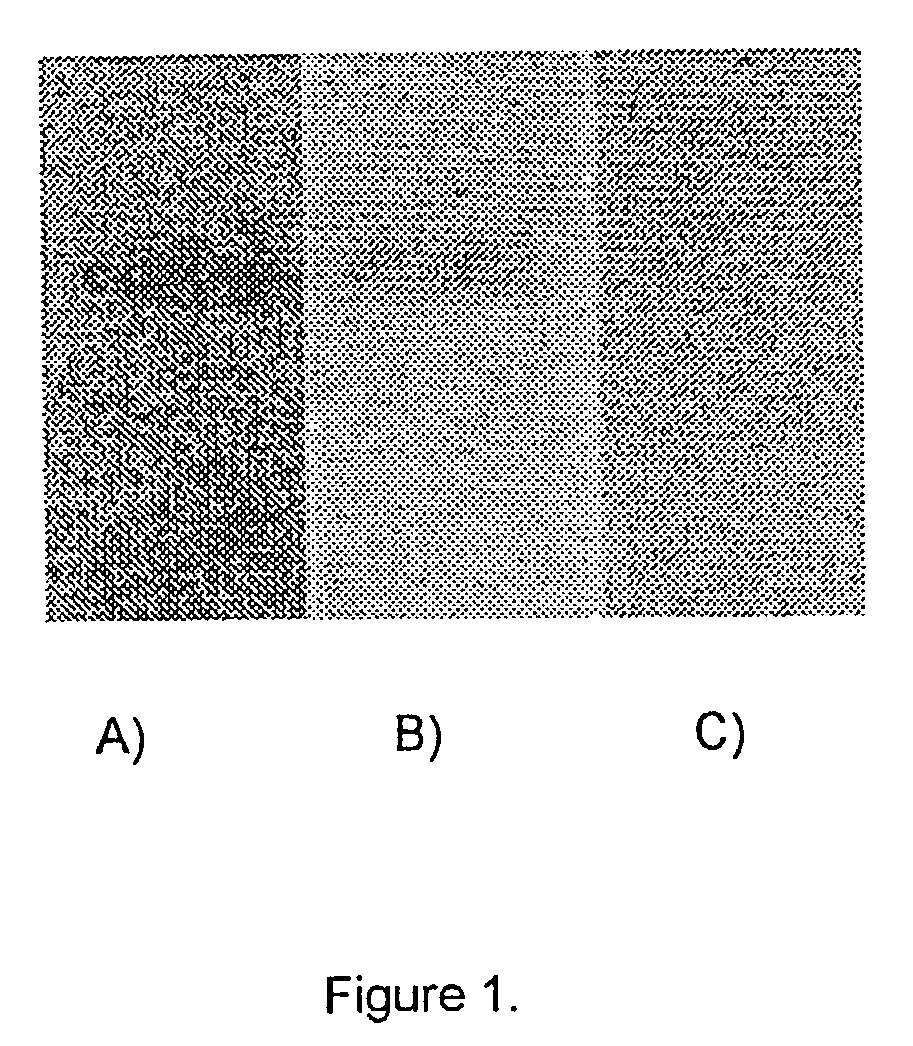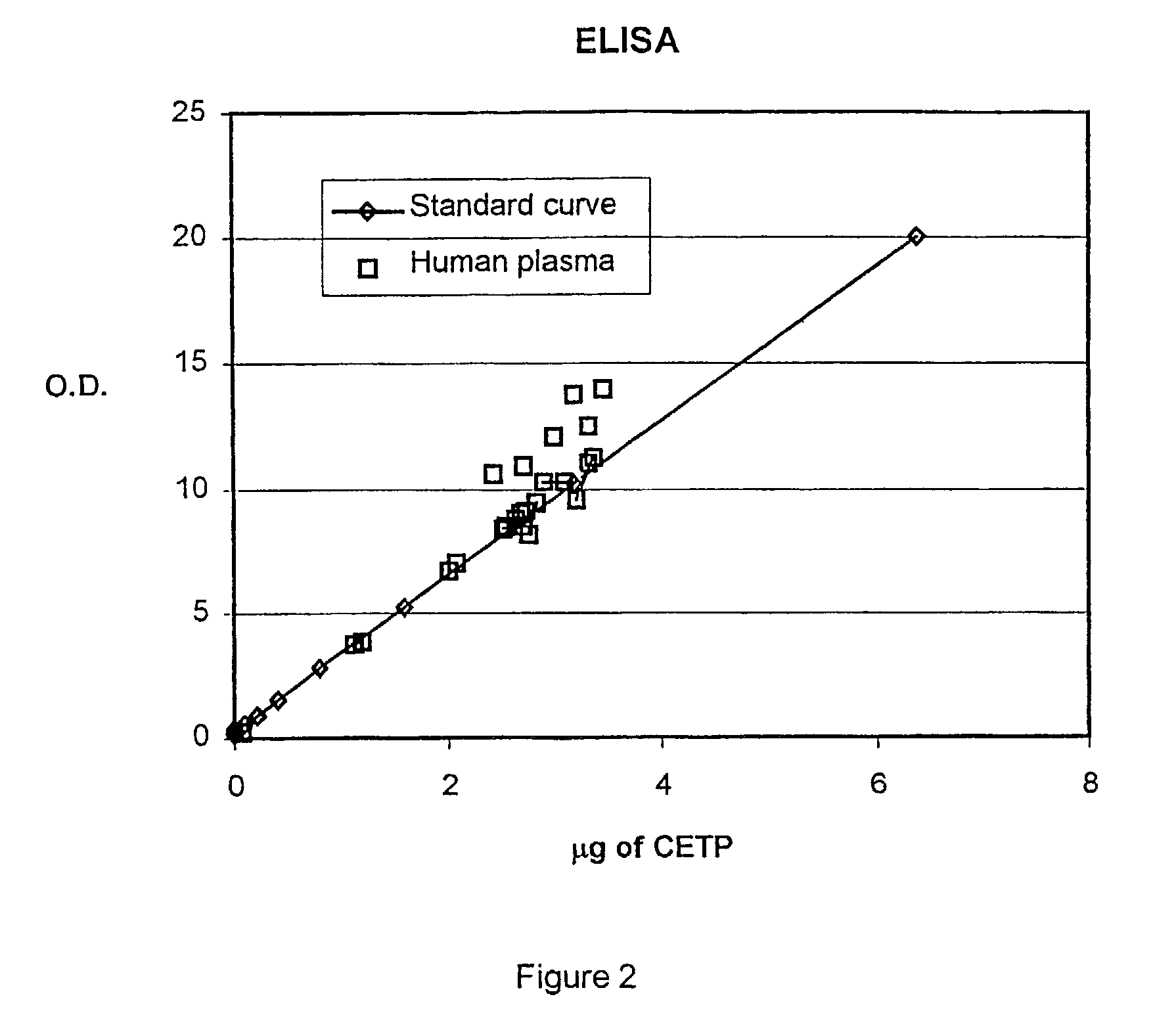Immuno enzymatic quantification method for cholesterol ester transferring protein (CETP)
a technology of cholesterol ester and enzymology, which is applied in the field of immunoenzymatic quantification of cholesterol ester transferring protein (cetp), can solve the problem of limiting the use of fluorescence measurement equipment in laboratories that have the equipment necessary to measure fluorescence, and achieve the effect of improving detection, diagnosis and follow-up
- Summary
- Abstract
- Description
- Claims
- Application Information
AI Technical Summary
Benefits of technology
Problems solved by technology
Method used
Image
Examples
Embodiment Construction
[0035]This invention consists of a system to detect and quantify CETP. The system requires the use of fused protein GST / CETPCOH, synthetic peptide CETP H486-S496 and polyclonal antibody H486-S496. The use of this system makes it possible to identify, evaluate and give follow-up to patients with dyslipidemias, whose effects are related to alterations in the level of CETP circulating in plasma with the purpose of evaluating their risk of developing atherosclerosis. This system is designed for use in clinical practice and / or research related to CETP. Samples of different origins, both biological and synthetic, can be used, preferably plasma or serum, cellular extracts or from tissues, culture media and purified or semi-purified antigens.
Fused Protein GST / CETPCOH
[0036]GST / CETPCOH has an approximate weight of 67 KDa, 3.7 KDa correspond to the CETP carboxyl terminal, the rest correspond to glutathione-S transferase. GST / CETPCOH is designed for use in both ELISA and Western-Blot tests, as ...
PUM
| Property | Measurement | Unit |
|---|---|---|
| temperature | aaaaa | aaaaa |
| temperature | aaaaa | aaaaa |
| density | aaaaa | aaaaa |
Abstract
Description
Claims
Application Information
 Login to View More
Login to View More - R&D
- Intellectual Property
- Life Sciences
- Materials
- Tech Scout
- Unparalleled Data Quality
- Higher Quality Content
- 60% Fewer Hallucinations
Browse by: Latest US Patents, China's latest patents, Technical Efficacy Thesaurus, Application Domain, Technology Topic, Popular Technical Reports.
© 2025 PatSnap. All rights reserved.Legal|Privacy policy|Modern Slavery Act Transparency Statement|Sitemap|About US| Contact US: help@patsnap.com


